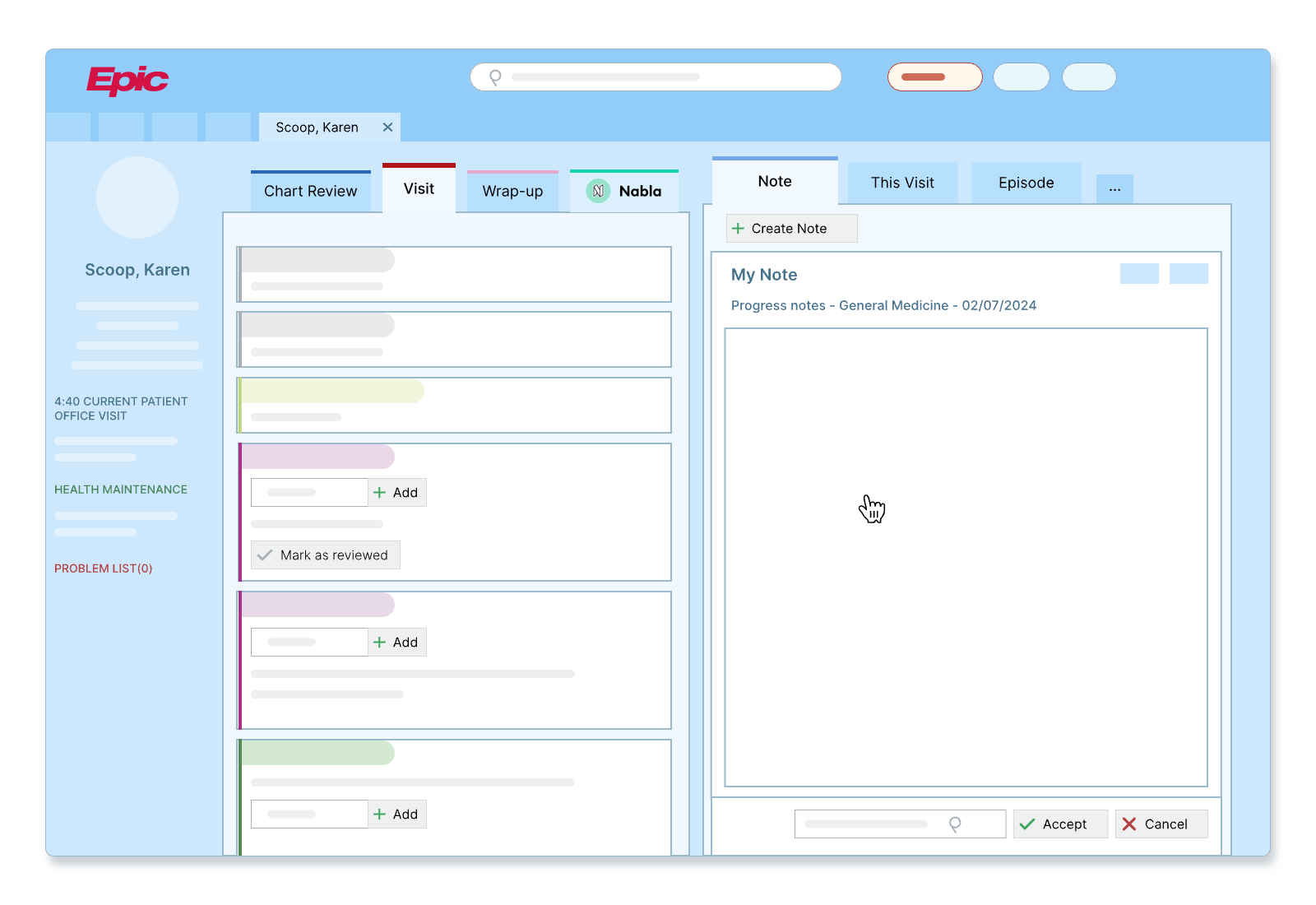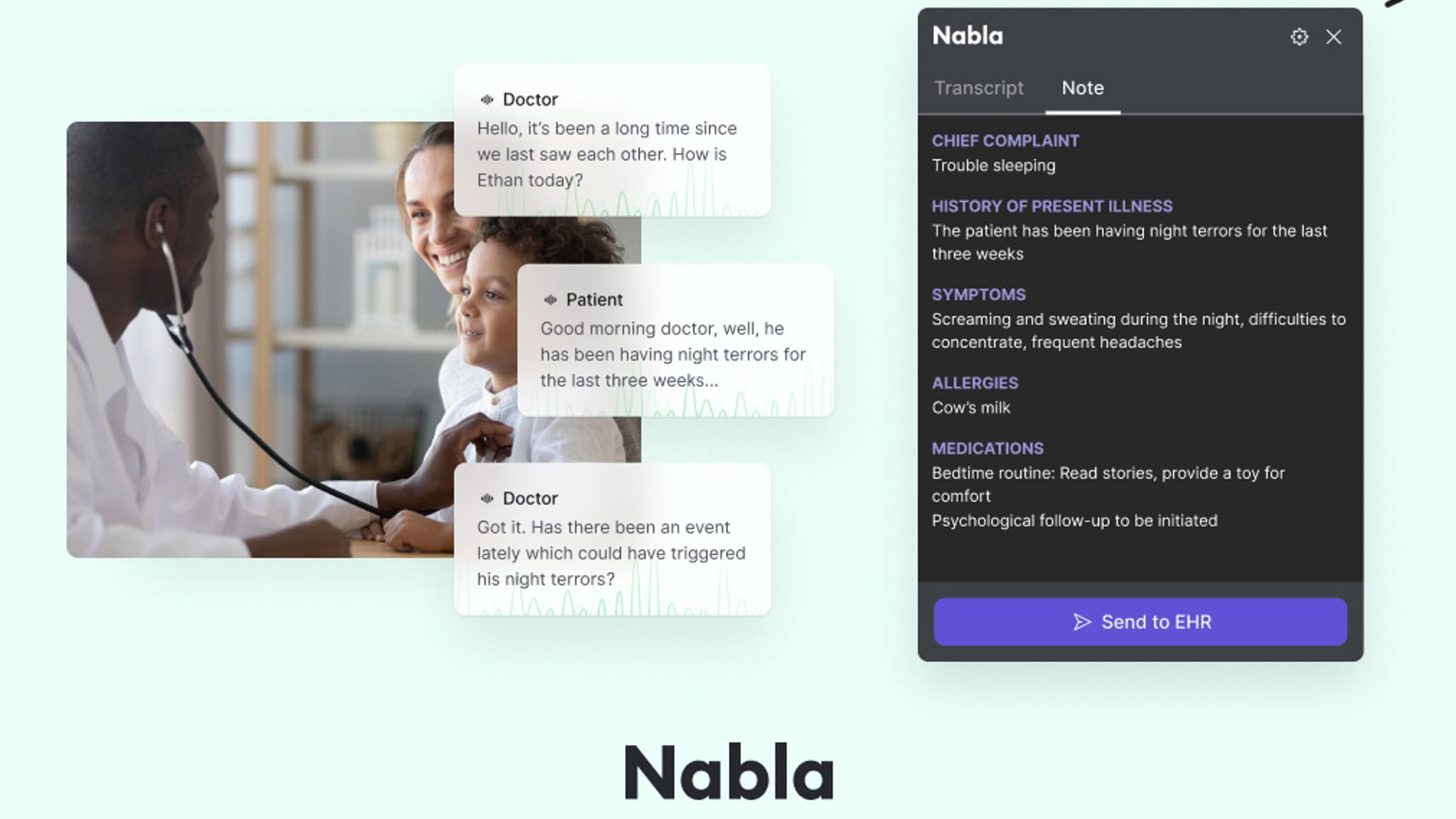
As UI Health Care works to increase access for all Iowans, the organization is actively adopting new, innovative technologies to support its teams, reduce the administrative burden involved with patient care, and enable a stronger connection with patients.
To guide the development of UI Health Care’s technology strategy, leaders gathered feedback from clinicians across the organization to identify the strengths and weaknesses of our electronic health record system and other digital tools. When clinicians were asked to identify areas that created administrative burden, impeded personal efficiency, and impacted patient care, a few rose to the top:
- Integration of outside patient records
- Chart review
- Clinical documentation
Leaders took this feedback and began searching for the most advanced solutions available to improve the clinician experience in these areas. After thoroughly vetting multiple vendors and conducting several successful pilots, UI Health Care recently implemented two new tools to support clinician wellness and improve clinical care across the enterprise.
“We are changing our approach to technology and moving toward becoming an early adopter that helps drive the further development of new technologies that may improve traditional outcomes metrics or other domains such as staff wellness,” says Jim Blum, MD, Chief Health Information Officer of UI Health Care. “One of the things we are trying to do is partner with new phase companies, becoming an early client who is willing to pilot tools and provide feedback for further development.”
Evidently and Nabla, two new AI tools that were recently rolled out at UI Health Care, are prime examples of the type of technology partnerships UI Health Care is now pursuing. Both Evidently and Nabla are supplemental tools that do not replace the judgment of UI Health Care providers, and they have been enthusiastically received, with some clinicians even calling them “game-changer[s].”
“We believe in investing in clinician well-being and making sure they have the best tools to do their jobs,” says Brad Haws, MBA, chief executive officer of the clinical enterprise and associate vice president of UI Health Care. “As we look to adopt new technologies, our primary goal is to improve patient care and advance our mission of changing medicine, changing lives. We are also excited by how these tools may help with job satisfaction, retention, and recruitment of new clinicians.”
Evidently cognitive AI for chart review
Clinicians spend a lot of time reviewing patient medical records. This data is often fragmented and in different parts of the EHR, particularly at major referral centers like UI Health Care, making it difficult to get a full picture of the patient’s health quickly and easily. The vast amount of data review required to provide optimal patient care can contribute to clinician burnout and inadvertently overlooking key data.
“Data integration is very important when you are a quaternary referral center like us,” says Blum. “Many of our patients do not receive primary care here and don’t have complete medical records in our EHR. Their medical history is often fragmented and needs to be pieced together from many areas of the record, which is a time-consuming process.”
In search of an innovative technology that integrates all the patient’s data in the EHR, UI Health Care identified Evidently as the solution of choice. This new chart review application in Epic uses artificial intelligence, or AI, to summarize and display all relevant patient data in one place, enabling providers to quickly and efficiently understand a patient’s comprehensive health history and conditions.
Jason Misurac, MD, MS, clinical associate professor of pediatrics and Associate Chief Health Information Officer with University of Iowa Stead Family Children's Hospital, served as clinician lead and primary vendor liaison for the implementation of both Evidently and Nabla, from pilot to wide-scale launch.
“We piloted Evidently with 20 providers across specialties and five members of our clinical documentation improvement team to see how well it identified conditions, and we got strong positive feedback on the caliber of tool,” says Misurac. “On the first day that we rolled it out across the entire system, we had over 2,000 clinicians access the application, which is a phenomenal response.”
Everyone who has access to Epic can use Evidently, though the tool is currently optimized for physicians and advanced practice providers (APPs), with plans to engage nurses and other allied health care clinicians in the future. Patients may not see anything different, but they may notice their clinicians are more efficient and complete in knowing their medical history, increasing trust in the clinician-patient relationship.
Evidently ensures patient privacy by following industry best practices for information security, providing dedicated environments with data encryption, annual SOC2 Type II certification, strict access controls, and compliance with HIPAA and other healthcare regulations.

Nabla ambient scribing for clinical documentation
It’s estimated that for every hour physicians provide direct clinical face time to patients, nearly two additional hours are spent on EHR and desk work within the clinic day. Many clinicians feel overwhelmed by their clinical documentation responsibilities.
Nabla, an advanced ambient scribing technology that takes notes for the clinician during a patient’s visit, can help make the clinical documentation quicker and easier for clinicians. The tool listens and creates a summary for the clinician so they can focus more on the patient during the visit.
“What we found during a five-week pilot program with Nabla was that the clinicians who participated achieved a 4.3 out of 5 clinical note rating,” says Misurac. “Participants also reported a 26% reduction in burnout symptoms. All of these things contribute to better patient care and improved clinician well-being, so we are really excited to see what the impact will be with large scale implementation.”
Clinicians who are using Nabla will ask patients for verbal permission to use it during their visit. The conversation is not recorded. The HIPAA-compliant software listens during the visit using speech-to-text technology and documents the encounter, which is stored for clinician review for a brief period of time. From this documentation, the AI generates a draft note which the clinician then reviews, edits, and transfers to the patient’s medical record.
“Many organizations are using ambient scribing technology for a select group of clinicians – neurosurgeons, for example - but we are doing something different in that we are making it available for all our clinicians, including our trainees, all at once. This is unprecedented,” says Blum. “We are helping Nabla continue to improve its product by helping them develop features designed for specific specialties. For example, in a later phase of development, we plan to work with Nabla to create special features as needed for nurse workflows to accommodate their unique clinical documentation processes.”

Looking ahead to the future
The implementation of Evidently and Nabla is only the start – UI Health Care leaders intend to roll out additional technology and AI tools in the near future, all with the goal of improving patient care and the employee experience. In selecting any tool, UI Health Care follows a thorough vetting process, working with compliance and legal teams to safeguard patient data.
“In response to feedback from our providers, we are committed to rolling out additional tools in the coming months to further ease the administrative and documentation burden,” says Blum. “We are appreciative of everyone who supported the pilots and wide-scale roll-out of these tools. We will be working hand in hand with clinicians, providing them with the support and resources they need to harness this new technology to its fullest potential.”